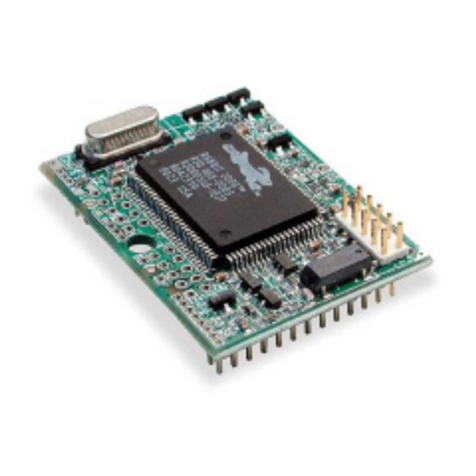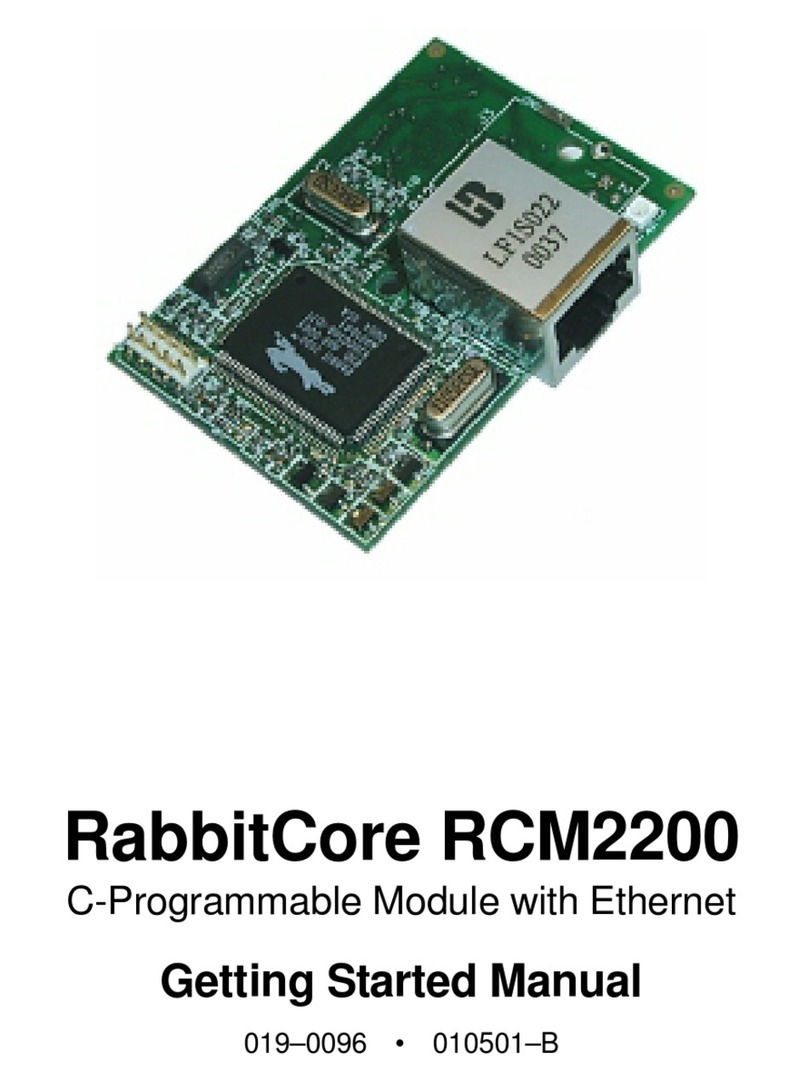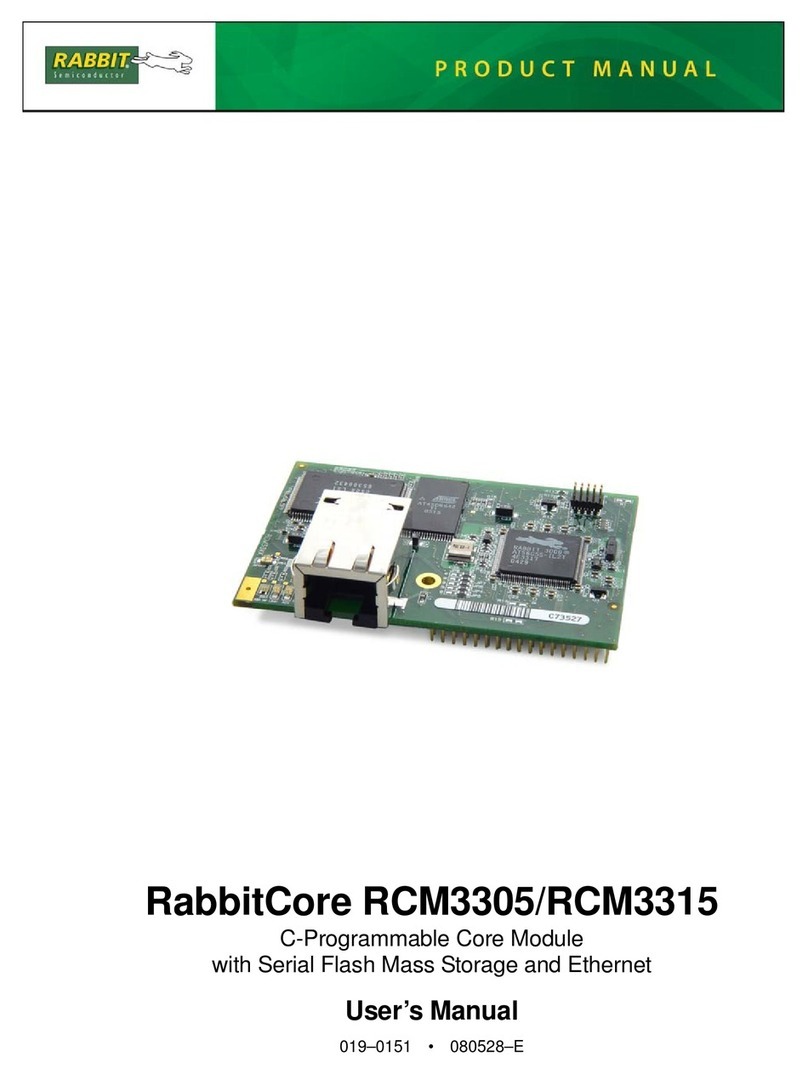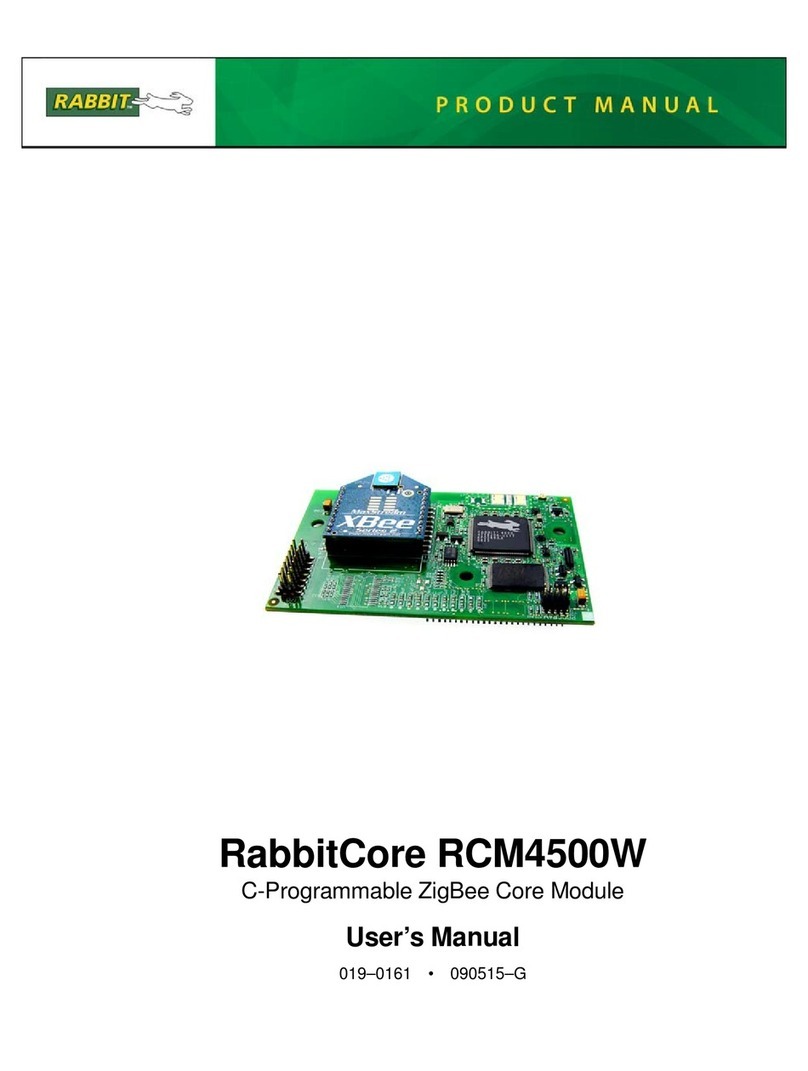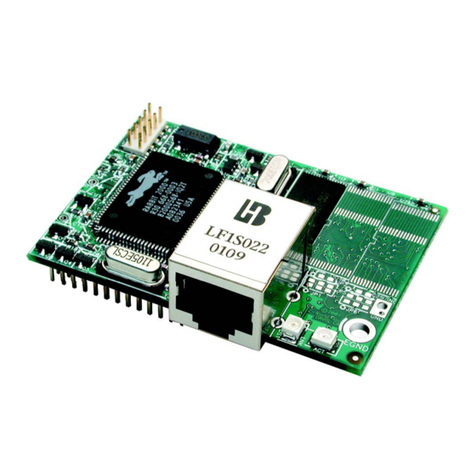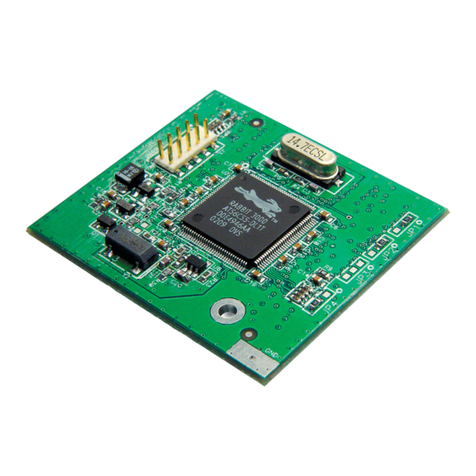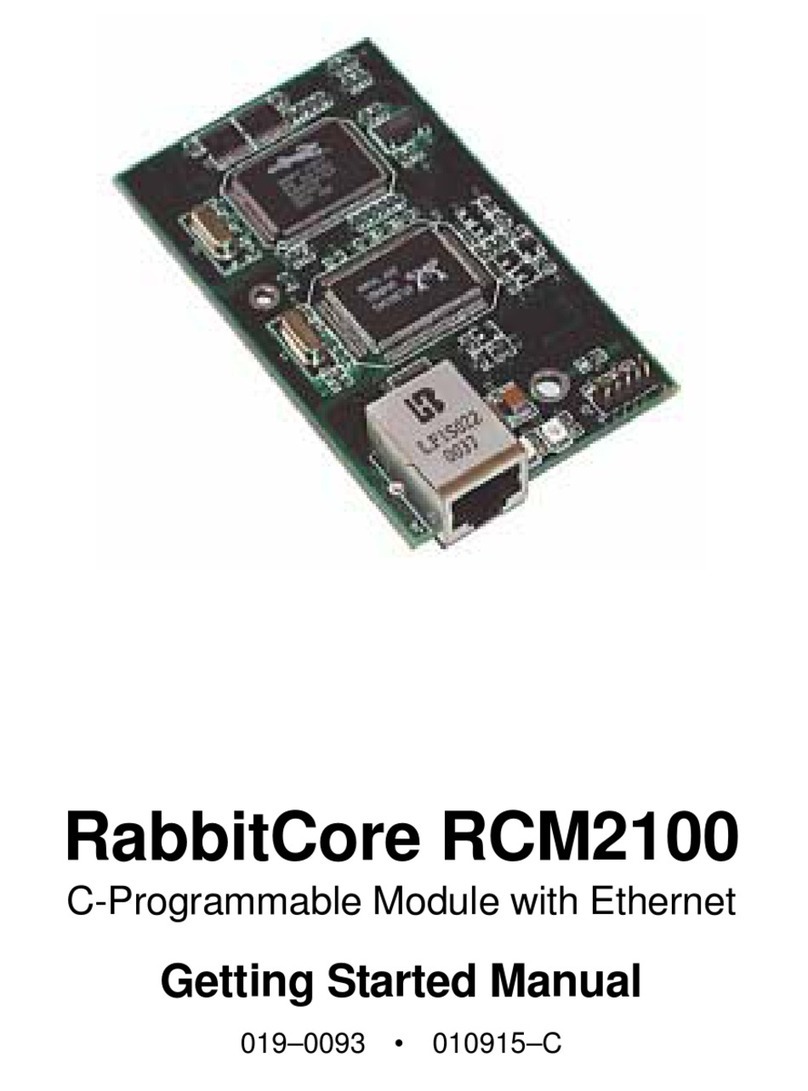Getting Started
Table of Contents
Chapter 1: Introduction & Overview 1
1.1 Rabbit 3000 Microprocessor............................................................................................................... 1
1.2 RCM3000 Series RabbitCore Modules............................................................................................... 2
1.2.1 Physical & Electrical Specifications ........................................................................................... 3
1.3 Development Software........................................................................................................................ 4
1.4 How to Use This Manual.................................................................................................................... 4
1.4.1 Additional Product Information .................................................................................................. 4
1.4.2 Additional Reference Information .............................................................................................. 4
1.4.3 Using Online Documentation ...................................................................................................... 5
Chapter 2: Hardware Setup 7
2.1 Development Kit Contents.................................................................................................................. 7
2.2 Prototyping Board............................................................................................................................... 8
2.2.1 Prototyping Board Features ......................................................................................................... 9
2.3 Development Hardware Connections ............................................................................................... 11
2.3.1 Attach Module to Prototyping Board ........................................................................................ 11
2.3.2 Connect Programming Cable .................................................................................................... 12
2.3.3 Connect Power .......................................................................................................................... 13
2.4 Run a Sample Program ..................................................................................................................... 14
2.5 Where Do I Go From Here?.............................................................................................................. 14
2.5.1 Technical Support ..................................................................................................................... 14
Chapter 3: Software Installation & Overview 15
3.1 An Overview of Dynamic C ............................................................................................................. 15
3.1.1 Hardware Requirements ............................................................................................................ 16
3.2 Installing Dynamic C ........................................................................................................................ 17
3.2.1 Program & Documentation File Location ................................................................................. 17
3.2.2 Installation Type ........................................................................................................................ 18
3.2.3 Select COM Port ....................................................................................................................... 19
3.2.4 Desktop Icons ............................................................................................................................ 19
3.3 Starting Dynamic C........................................................................................................................... 20
3.3.1 Communication Error Messages ............................................................................................... 20
3.4 Sample Programs .............................................................................................................................. 21
